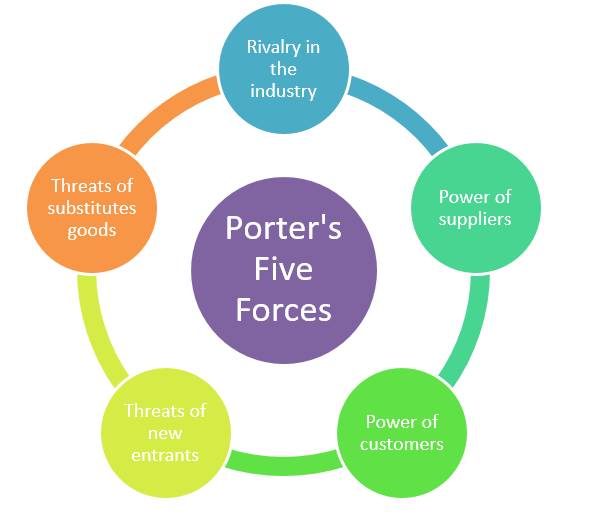Porter’s Five Forces model is a framework for analyzing a business’s competitive environment. It includes five key forces that determine the competitive intensity and attractiveness of a market. These forces are:
1. **Threat of New Entrants:** This refers to the ease or difficulty with which new competitors can enter the market. High entry barriers (like high capital requirements or strong customer loyalty for existing brands) mean a lower threat of new entrants.
2. **Bargaining Power of Suppliers:** This force examines how much power and control a business’s suppliers have over the potential to raise prices or reduce the quality of purchased goods or services, which, in turn, would lower industry profitability.
3. **Bargaining Power of Buyers:** This force looks at the influence that customers have on a market. When there are few buyers, or each buyer purchases large volumes relative to the size of a single supplier, the buyer’s bargaining power is strong.
4. **Threat of Substitute Products or Services:** This refers to the likelihood of customers finding a different way of doing what you do. If substitution is easy and viable, it weakens your power in the market.
5. **Rivalry Among Existing Competitors:** This looks at the intensity of the competition currently in the market. High rivalry limits the profitability of an industry.
The model is widely used to analyze the industry structure of a company as well as its corporate strategy. It is a useful tool for understanding where power lies in a business situation. This is useful, both in understanding the strength of an organization’s current competitive position, and the strength of a position that an organization may look to move into.

